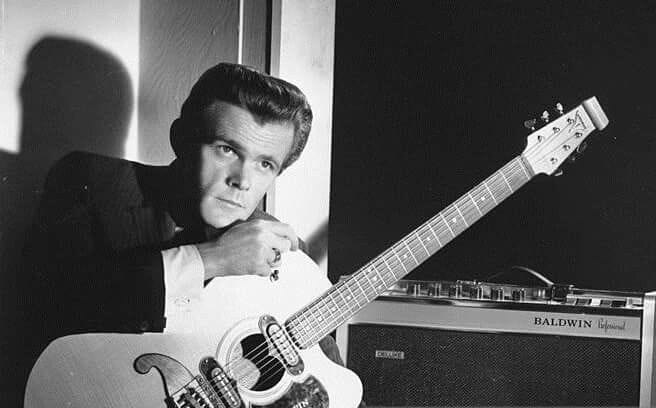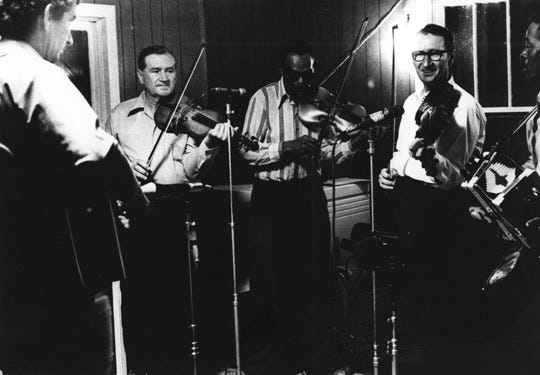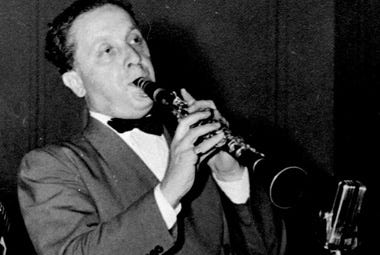From the mid-1990’s to the early 2000’s, I hosted a radio show in Austin Texas on NPR Station KUT 90.5 FM; 100,000 watts broadcasting from the University of Texas Communications Building. My shift started at midnight every Wednesday night and went till 5am Thursday morning and it was entirely open programming; I could play whatever I liked. So, I did. I called it “The Night Owl” show and over the course of about 13 years I foisted my idea of what music is on an unsuspecting listening audience. The front office always told me I did a good job. And come pledge drive time, my shift outpaced all other Overnight shifts by a country mile. Eventually I was even asked to fill in host during daytime hours when the famed John Ailei took a break from his popular show.
That all changed one day when new management showed up and decided to institute a playlist and hire “NPR” voices who were “hosts” and no longer “programmers.” To my mind, it was the beginning of the end of Austin’s unique creative-lead culture. The passage of time it seems has to have proven me correct.
Here’s what a typical setlist looked like. I would devote my first few hours to American Music, in all its wonderful expressions and complexions. Not a “Best of,” just an overview of a typical Wednesday overnight show on an NPR station in Austin in the mid-90’s.
Cliff Edwards “Night Owl”
My radio theme song started every show with it. Probably better known as the voice of Jiminy Cricket in Disney’s “Pinocchio,” or the disembodied voice of the recalcitrant Confederate soldier from “Gone in the Wind,'' Edwards had a career like none other. An intimate of Gershwin, he recorded the first version of “Fascinatin’ Rhythm,” and under the moniker “Ukulele Ike” recorded a long series of risqué hot numbers. This was the theme song of my radio show for 13 years on KUT Radio 90.5fm in Austin TX. In his life, Edward earned and then blew a million dollars three times yet died a pauper in LA.
Johnny Paycheck “A-11”
Long before he shot a man in a barroom fight and did a stint in the pen, Johnny was a touring bassist and prolific songwriter. Just so happens he was on the road with George Jones band in NYC when he cut this amazing track. The backstory of this recording session is the stuff of legend, you just can’t make up and feel free to look it up. This is my #1 C&W request when I see a honkytonk band, without a hint of irony.
Bill Monroe “When the Cactus is in Bloom”
Here’s the Big Mon who needs little introduction. I love this track however as he covers the great Jimmie Rodgers showing off his yodeling skills and if you listen closely, he’s playing guitar and not his iconic mandolin. A rare and important recording in many respects.
Jimmie Rodgers “My Blue-Eyed Jane”
Now Jimmie himself chimes in with my favorite recordings of his, and not the way you’re probably used to hearing him. The Blue Yodeler is in crooner mode with a jaunty little band; you can hear a real lift in his performance. It’s a good snapshot of what was the hippest sound of his day. Nothing fancy, just a local band giving it a great go of it.
Jim and Jesse “Border Ride”
Nothing like cultural appropriation done right. West Virginians giving their best at what they think a Mexican Polka sounds like. And pretty much nailing what a bluegrass band sounds like when they think they’re sounding like a Mexican polka.
Teddy “Mr. Bear” McRae “Radar”
Ah, a deep cut novelty number. R&B comic singer Mr. Bear lays out the travails of the advances of modern technology that resonate even today. A longtime favorite. Who doesn’t love timpani?
Howlin’ Wolf “Smokestack Lightning”
Not much to say here other than this band and this sound here completely led me away from European goth rock bands like Psychic TV and Bauhaus and deeply into Black American Music. Wolf led to Muddy who led to Bukka White who led to Willie Johnson, etc... There’s not much caucasity to be found in Wolf’s music and I searched for more of this Juke for a goodly portion of my early development as a musician.
Balfa Brothers “Balfa Waltz”
Well. This tune and these guys always leave me at a loss for words. Along with Iry LeJune they represent my introduction to Louisiana French culture, and all that that entails. You’d do well to find that first Swallow Records LP with the yellow cover. Change your life if you let it. Could be why I live in Louisiana today. Needed to get closer to it.
Charles Mingus “The Clown”
Was going to share “Cumbia Jazz Fusion,” my all-time favorite of his compositions, but 24 minutes of anything is a bit much. Instead, I present to you this experimental melding of music and poetry that pretty much tells it like it is.
Jabbo Smith “Jazz Battle”
Smith had the unfortunate luck of living and working at the same time and scene as Louis Armstrong and that’s a damn shame. This tight little workout featuring a quartet of clarinetist Omer Simion and pianist Alex Hill, both gifted band leaders in their own right, is a marvel of Black American chamber music. I remain as in awe of it today as the first time I heard it decades ago.
Don Stover - “Things in Life”
The title track from Rounder Records very first release. I can’t express how deep an influence Don’s music was/is on me. I’d simply suggest you seek out this record and enjoy it. My Bad Livers partner Danny Barnes actually recorded an entire CD of Stover’s material as a tribute.
Roland Kirk “Bechet, Byas & Fats”
Before he was revealed as “Rashaan,” he recorded the seminal LP “Rip Rig and Panic” which I go to often when putzing around the house. This tune as the name implies reaches back to honor the Masters as it points forward. What I always felt the best of culture should do.
Dave Tarras “Lo mir Freilachsein”
Dave was the dean of the American “klezmer” clarinetists and here he is in full power with a crackerjack band playing a well-known Moldovan dance tune in the thoroughly Jewish style. On my top ten greatest recordings, period. To me, this is the sound of the American-Yiddish experience, no longer in hiding and living proud and loud.
G. Giovale “L’Appuntamento”
Can’t tell you much about Mr. Giovale other than he recorded quite a bit and that he’s a fine example as you will find of the Italian string tradition as you will encounter. This tradition was brought from Italy and centered in the New York area, spawning many great players and string instrument builders who brought their music and craft from the Old Country. However, the tenor banjo featured on this recording is a distinctly American invention, derived from enslaved African sources. Only in America.
El Ciego Melquiades “El Gato Negro”
“The Blind Fiddler” of San Antonio lays down a lovely polka. Before the accordion showed up and ruined everything, it was the fiddle that reigned supreme in the dancehalls of San Antonio. And his few recordings, a throwback when he made them, are but a glimpse of that time. Orle’
Harry Choates “Je Pase Durvan a Porte”
The great Louisiana French fiddler and band leader was famed for his admixture of French music and the modern western music of the time, leading with its prominent steel guitar. Here’s the totally sad traditional tune “As I pass by your door.” Choates was phenomenally popular in Texas and this particular tune entered the repertoire of dance bands even today. (I learned it in Brian Marshall’s Polish band with English lyrics.) A notorious drunk, Choates was to die under mysterious circumstances after an epic bender in the Travis County jail in Austin. Another all-time fave.
Bob Wills “Crippled Turkey”
Here’s the legendary Bob in a rare appearance on the fiddle and not how you probably imagined him. This is the old Texas fiddle, the kind he was known for before he became the great “Western swing” band leader. Some music critics have the nerve to call him a “lousy” fiddler. You be the judge.
Willie Nelson “Undo the Right”
If I was being honest, Johnny Bush’s version of this tune is my very favorite. But find version from his unreleased demo sessions. It’s like he’s sitting in your front room and the steel guitarist is in the bathroom…Transcendent.
Duke Ellington Orchestra featuring Lonnie Johnson guitar “Hot and Bothered”
Ellington is a mammoth and would show up on any playlist of American music. But this track featuring rough and ready Johnson on guitar, is something special. As the songs title suggests, it’s a frantic romp with some of the most aggressive bass playing on record. By the time they get to Johnson, he unleashes a flurry of skronk and bent notes out of his Mexican 12 string guitar, totally commanding the space over the large orchestra. Three and a half minutes of Black American Music excellence.
Jacky Ward “Big Blue Diamond”
This tune is one of the most requested on the bandstand in the dance halls I’ve played around Texas. I’ve heard about a dozen different versions too, and everybody says their version is the original. I’ve heard it here in NOLA even. Best I can tell, it started life at a C&W tune and then entered the R&B repertoire. Ward’s 1972 version is closest to how I know it played.
Cats & the Fiddle “I Miss You So”
Two Tiples (a 10-string ukulele like instrument,) a tenor guitar, a bass and three voices. So much music from so little. Most of their stuff is on the hot end but this was a major radio hit for them during WW2, and no wonder.
Kef Time “Soode Soode”
After the Armenian Genocide at the hands of the Turks (never forget) many of the survivors landed here and continued their traditions. Here Udi/Singer Richard Hagopian led an all-star band he assembled for a short stint as a house band at the Sands Casino in Las Vegas of all places. “Kef” means party and hell yeah. American as any music in this collection.
Narciso Martinez “Patricia - Vals Alto”
“El Harrican de Valle,” Narciso was one of the first Tejano accordionists to be recorded and here with Bajista Santiago Alemeda they provide a window to the music that accompanied the dance culture of the Rio Grande Valley of Texas. As the name implies, the old music.
So, there you go. Some fun music to check out and Juke out on. Hope you enjoy!
Mark Rubin
New Orelans LA








